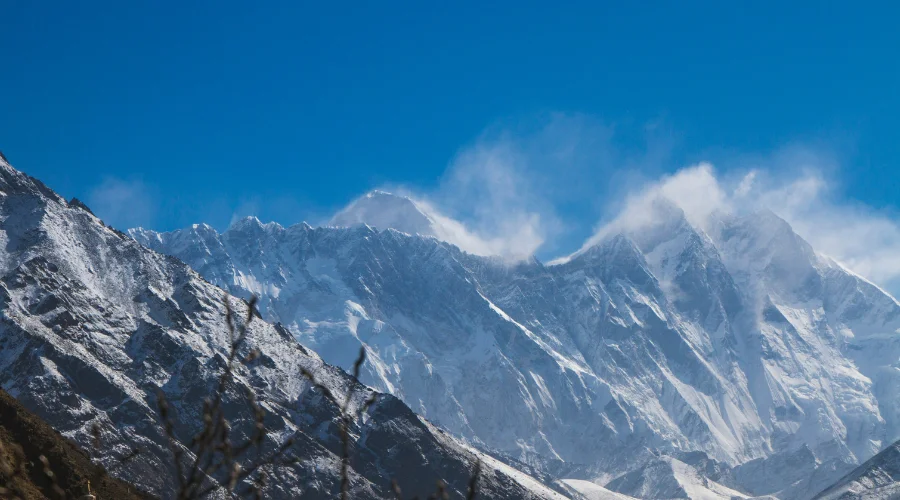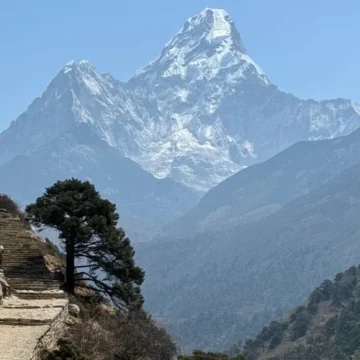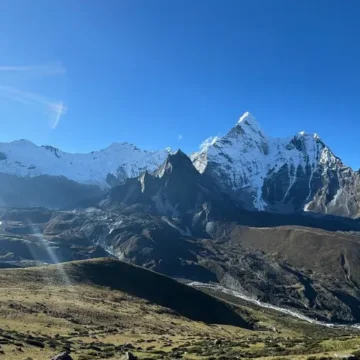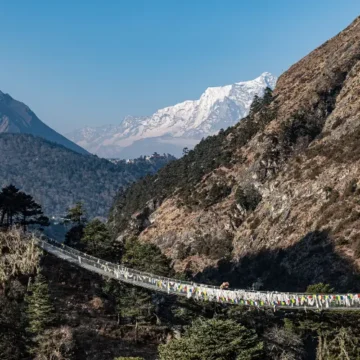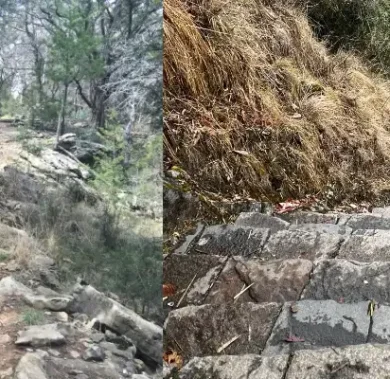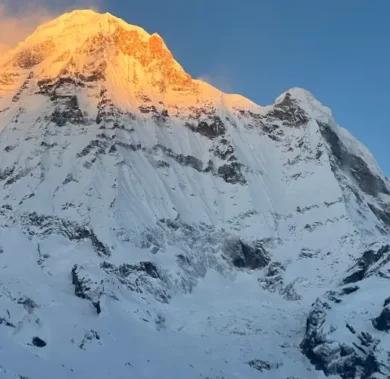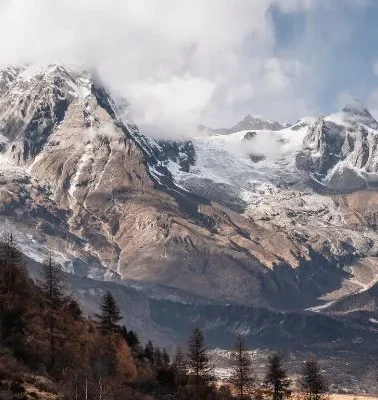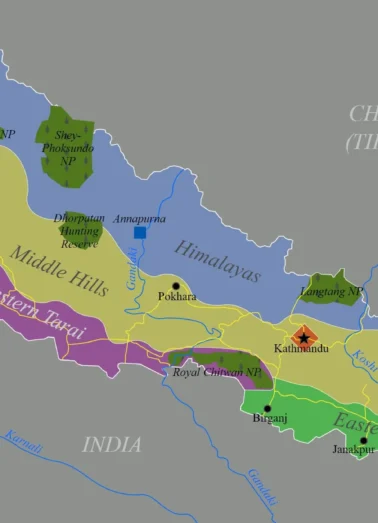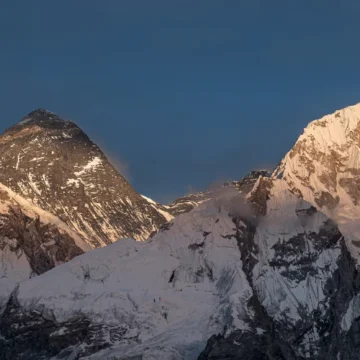
All About Everest Base Camp Weather
Table of Contents
Nepal’s tourism has a big connection with Mt. Everest, a beautiful place that attracts a lot of adventurers and nature lovers from different parts of the world. Everest Base Camp Weather can make a huge difference in it.
The magic of the world’s largest mountain is not only in its amazing natural beauty but also in the soulful and cultural meaning it brings.
The travellers who make it this far are not only looking to tackle a physical challenge but also to immerse themselves in the depth of Nepalese tradition and its people’s friendly spirit. For many people, the trip to Everest represents a spiritual journey.
It is an expedition for self-discovery and a continuous link with nature. We will learn about the Weather Everest base Camp.
Our topic now is the weather Everest Base Camp. The weather at the base camp of Everest, situated at a height of 5,364 meters (17,598 feet), is highly unstable and quickly changes. The daytime temperatures in spring and autumn climbing seasons are mostly from 10 to 20 degrees Celsius.
On the other hand, the temperature of Everest base camp can drop rapidly to below freezing, mostly during the night. The Himalayan Ranges influence the Weather Everest base Camp, thus creating a local microclimate around EBC.

Everest Base Camp Weather of Southern Site – Nepal
Have you ever imagined what it feels like to be part of a cycle with four seasons in a day? Well, you can experience it on the Everest base camp trek. Though quite challenging, the weather at Everest Base Camp in Nepal is an intriguing part of the trekking adventure.
Because it is located at about 5,364 meters (17,598 feet) above sea level, the base camp is subject to fluctuating climatic conditions, largely influenced by its closeness to the majestic Himalayan peaks.
During high trekking seasons of spring (March to May) and autumn (September to November), daily temperature remains relatively low and ranges from 10 to 20 degrees Celsius.
This period features the best weather at Everest base camp conditions, mostly with clear skies and spectacular mountain views. While the days are delightfully warm, nights can sizzle in frostiness, sometimes falling below zero. To deal with the cold nights, walkers must wear warm clothing.
Severe conditions follow the winter months of December to February in Everest Base Camp. Temperatures fall to as low as -20 degrees Celsius, and the area experiences heavy snowfall.
Therefore, walking is quite hard. The paths may become icy and slippy, so hikers must walk carefully and wear appropriate footwear like crampons. However, the best part of the winter is its unique and miraculous beauty, with the landscape covered in clean snow.
The monsoon season, which ranges from May to September, is the peak of summer in Nepal. It provides heavy rainfall to the Everest region, making trekking in the rainy season tough due to muddy and slippery trails and the threat of landslides.
Everest Base Camp Weather of Northern Site – Tibet
The weather at Everest Base Camp Tibet can be unfriendly and changeable with no observation. Sitting over 5,000 meters (16,400 feet) above sea level guarantees the climbers continuous freezing conditions all year round.
The EBC Climate during this thrilling season from April to May and September to October can be very harsh, with temperatures ranging between -5 to 10 degrees Celsius during the daytime. However, the temperature of Everest base camp may go down at night to as low as -15 degrees Celsius or drop to lower ranges.
The trekkers must be capable of dealing with these types of temperatures, however tough they seem, with the needed clothes and equipment for comfort.
Due to the harsh, freezing Weather at Everest Base Camp Tibet, the Everest Base Camp is hard to reach in winter, from November to March. For the better part of the year, this region has temperatures ranging between -20 degrees Celsius to -30 degrees Celsius and experiences heavy amounts of snow.
This storm is circuitous, trekking is very demanding because the routes are covered with snow, and avalanches are at risk. Although the winter environment is demanding, there is also a distinct charm in the winter landscape, with everything transformed into a glittering snow forest.
Everest Base Camp Weather by Month
| Month | Temperature Range (°C) | Temperature Range (°F) |
| January | -10 to -5 | 14 to 23 |
| February | -8 to -3 | 18 to 27 |
| March | -5 to 0 | 23 to 32 |
| April | 0 to 5 | 32 to 41 |
| May | 5 to 10 | 41 to 50 |
| June | 10 to 15 | 50 to 59 |
| July | 10 to 15 | 50 to 59 |
| August | 10 to 15 | 50 to 59 |
| September | -2 to 3 | 28 to 37 |
| October | -5 to 0 | 23 to 32 |
| November | -8 to -3 | 18 to 27 |
| December | -10 to -5 | 14 to 23 |
When to trek Everest Base Camp?
What is the best time for Everest Base Camp depends on factors such as weather conditions, visibility, and trail availability. Autumn (Sep-Nov) and spring (Mar-May) are the major trekking seasons, with pros and cons.
During spring, hiking becomes more comfortable with milder temperatures and clear skies, giving ample opportunities to enjoy the fascinating view of the Himalayan ranges.
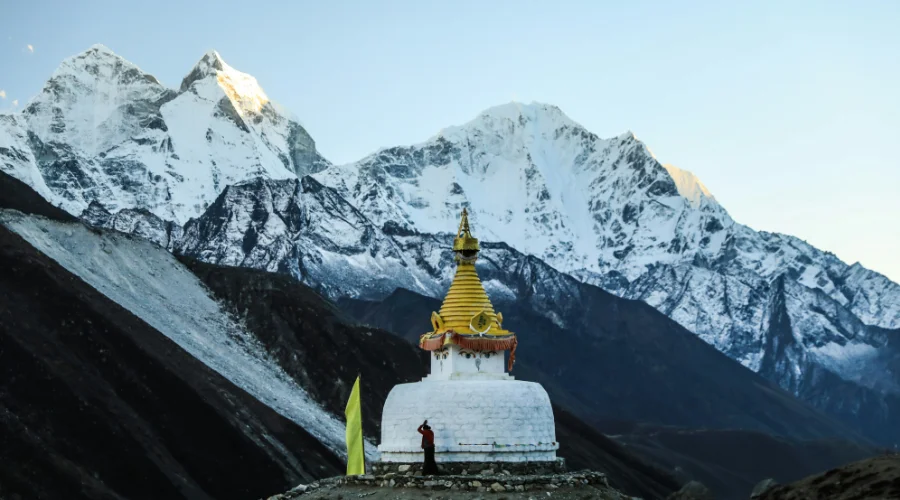
The rhododendrons that line the trail give you a beautiful view of pink and purple flowers. Yet, this is also the time of year when the number of hikers increases, and consequently, the trail becomes overcrowded, and the tea houses along the route become busy. Moreover, hikers must be able to cope with sudden heavy downpours and fast-paced weather patterns.
Autumn presents cooler temperatures and predictable weather conditions, so it is an option for most hikers. The skies are always blue, silhouetting the mountains and letting Mount Everest stand out as an icon.
Spring and Autumn are the best times to go to Mount Everest Base Camp during the trekking seasons that occur during these two periods. The weather conditions tend to be steady during such periods, with warmer temperatures and more visible skies.
People can also see it because it is visible, allowing trekkers to see the surrounding Himalayan peaks. Those seasons also provide a chance to understand the living ways of the area through its festivals and other celebrations without weather obstacles that usually trouble the people at other times.
Hence, spring or autumn is the Best Time to Go to Mount Everest Base Camp.

Time at Everest Base Camp
The time at Everest Base Camp follows Nepal Standard Time (NST), which is 5 hours and 45 minutes earlier than Coordinated Universal Time (UTC+5:45). Trekking to Everest Base Camp, located in the Himalayas of Nepal, allows travellers to experience the unique sensation of being in a time zone that aligns with the country’s local timekeeping.
Whether admiring the sunrise over the majestic peaks or resting under the starry night sky, Everest Base Camp visitors engage in the natural beats of the mountainous landscape.
Everest Base Camp Weather Station
Everest Base Camp Weather Station provides crucial meteorological data for trekkers, climbers, and researchers. This station is located at an altitude of approximately 5,300 meters and is one of the highest in the world.
The data collected at Everest Base Camp Weather Station includes temperature, wind speed, humidity, and atmospheric pressure, among other parameters. This information is vital for trekkers and climbers to understand the Everest region’s climate patterns and to predict the weather in Base Camp Everest.
The Everest Base Camp Weather Station is necessary for the region’s safety. It provides real-time weather updates, allowing trekkers and climbers to make informed decisions about their journey. The data collected at the Everest Base Camp Weather Station is used for research, helping scientists study the effects of climate change on the Himalayan region.
Everest Base Camp Weather Forecast
Various meteorological agencies and websites, including the Nepal Department of Hydrology and Meteorology, typically provide the weather forecast for Everest Base Camp. These forecasts are based on data collected from regional weather stations and satellite imagery.
The Everest Base Camp Weather Forecast can vary significantly due to the region’s high altitude and mountainous terrain. However, the Weather in Base Camp Everest is generally characterized by its extreme and unpredictable nature. Temperatures can fluctuate widely, especially at night, and trekkers should be equipped for rapid weather changes.
It is better to check the forecast regularly before a trek to Everest Base Camp. This can help you prepare for the conditions you are likely to encounter along the way. Packing appropriate clothing and gear for the trek, including layers, is essential to stay warm and dry in changing weather.
While the Everest Base Camp Forecast can provide valuable information, it is essential to be flexible and prepared for unexpected climate conditions. Trekkers should always prioritize safety and adjust their plans based on the current weather conditions at Everest Base Camp.
What is the Coldest month in Everest Base Camp?
From December, the winter season at Everest Base Camp brings colder temperatures and the chance of more heavy snowfall. Normally, at the time of day at Everest base camp in December, the temperature ranges from -5 degrees Celsius to 5 degrees Celsius.
At night, the temperature can drop drastically, and it is possible to be lower than -15 degrees Celsius. This zone is under-explored during this time, resulting in a peaceful trekking experience. On the other hand, trekkers need to consider changing the Everest Base Camp in December, which includes icy trails and the need to pack warm and insulated clothes.
In winter, particularly in January, the Everest Base Camp is in full bloom; the temperatures keep falling. Small temperature changes occur during the day, from -10 degrees Celsius to 2 degrees Celsius, giving way to significant drops at night, going as low as -20 degrees Celsius.
Heavy snow is a common occurrence, usually during this month. Therefore, this makes the trekking conditions highly difficult. The right gear, like warmly insulated clothing and durable footwear, is the most important for a January Everest trek.
Want to know more?
Speak to an Expert





Sandip Dhungana
Nepal 🇳🇵
Whatsapp: +977-9823636377

